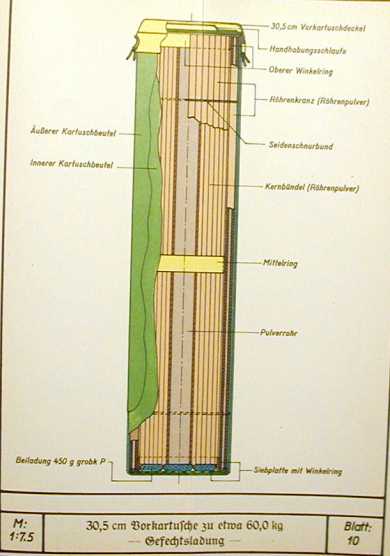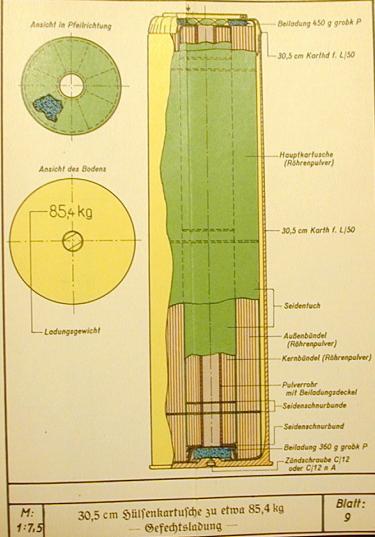So my answer is for the commander who ever he is to know his subordinates and to ensure that they understand his intentions
I won't discuss Jutland in detail, but I will give you a parallel communications disaster. (Not the Japanese, their communications systems and unit evolution execution of commander's intent that June 1942 was outstanding. It was the admirals who failed the Japanese sailors at Midway, not their communications; despite the Tone floatplane.)
I mean the Americans.
What do I mean?
The Americans had never fought a blue water general fleet action^1 in their naval history prior to WW II. Sounds incredible does it not?
^1 A general fleet action is described as a tactical level evolution where the bulk of a fleet in a theater is operationally committed to oppose an enemy naval evolution which requires the enemy to commit the bulk of his available fleet assets to execute the naval evolution.
It does not mean that they did not practice it, twenty fleet problems and exercises from the end of WW I to the beginning of WW II (almost annual at sea validation exercises of current theory) occurred, but it is no substitute for a fighting tradition that involves more than river gunboats and blockades of enemy ports or confused ambuscades of fleeing enemy ships. The wartime examples of American fleet evolutions were their civil war riverine operations, port blockades of that same war, and the Spanish American War, the frank embarrassment and chaos of the naval melee of Santiago de Cuba and the target practice at sitting ducks at Manila Bay. This does not mean that the American fleets involved in those evolutions and the admirals (Rogers, Dupont, Farragut, Dhalgren, Porter, Schley and Dewey) did not have severe (and I mean severe) fleet control problems and somehow managed by flag signal, signal rocket, blinker, and Bell infra-phone figure out in the midst of their battles to keep everyone together and on the same page, in frank imitation of British methods of the day, but it was always a case of "stick together, follow the flagship in line ahead, keep a sharp lookout and don't collide with each other." Brooklyn and Texas and Oregon especially illustrate this kind of American chaos at Santiago de Cuba, but Baltimore and Olympia had their moments at Manila Bay and this was when it was broad daylight and everyone understood Dewey's instructions to stay in line and follow him at least 4 cables apart.
Midway, oh Midway!
I'm sure some of the English posters on this board are familiar with Midway, but there is recent scholarship (declassified or first source re-examined) that makes a fresh approach on what really happened on the American side important to be undertaken. I mean the communications side of the affair. If Jutland's communication story is a bit confused to me because I am not certain how weather effects futzed radio communications, then I am in a better position to explain how fickle radio is when in a more "modern" setting in the American case.
1. After WWI experience as part of the Grand Fleet and as a result of their Caribbean evolutions, the Americans understood that
a shore command post with a master fleet plot was essential. This was the PACFlt command and control situation awareness tool. It was no different from the Admiralty plotting room or station controller plots for British air operations at about the same time, but seems to have been more intrusive as an operational art tool. IOW Nimitz told his admirals at key points in the battle where to go, what to expect and what to do off his master plot. One famous example is when Spruance and his staff were arguing over a garbled PBY report that had given a position fix and scalar movement value for Kondo's invasion troop convoy. As a matter of routine, Pearl had eavesdropped and picked up the PBY report, heard it more clearly *(ionosphere bounce, Murphy LOVE RCA and their radios) and it was plotted against the master plot and compared to pre-battle intelligence and staff expectations. Nimitz told his admirals to ignore it and stick to the pre-battle brief. Spruance (not the first or last time) overruled Miles Browning who wanted to strike it, Fletcher (canny and shrewd had already figured it out independently and Yorktown's air staff agreed with him) likewise complied and the Americans sat where they were to greet Nagumo exactly as planned. American situation awareness and communication at the op-art level was GOOD.
Apparently it was not too good at Jutland between fleet and shore naval higher headquarters but that is something I am not qualified to discuss in detail.
Where did American communications fail at Midway?
At the tactical unit level. Simard's recon assets based on Midway gave faulty situation reports, contacts and mistaken position fixes. The PBYs were supposed to be the USN's eyes top down in battle. Their crews were supposed to be the best recon trained crews in the fleet. Their sole reason to exist was to contact, report and update, die if necessary, but keep the enemy in sight and track him, so the American admirals knew where the enemy was moment to moment. At Midway, they failed. I kid you not. Most contact reports were either by submarine (Dolphin, Nautilus, a few others, key to some of Spruance's strikes) or by sheer Murphy factor guesswork, based on successful attack on contact reports from Midway strike sorties or otherwise sheer "Murphy knows how" guesswork by Enterprise and Yorktown strike package commanders who (in the air, when out of reach!) ignored the bumbling Miles Browning and his incompetent air staff weenies in the case of Enterprise's air group or adjusted for drift errors by Yorktown air staff, or by Spruance, himself, on 2 occasions (Kurita and Yamaguchi hit) who kept his own plot of everyone and everywhen on a cardboard plotting circle!
Admiral Speaks From the Grave About Midway Battle
!@# !@#$ MARC MITSCHER! A 5 degree angle plot error in Hornet's air staff estimate. Ring follows his instructions to the letter and he missed. Man at fault? Mitscher who allowed no deviations and who was supposed to be the "great aircraft carrier warfare expert". Want to know who handled the aircraft carriers at Philippine Sea? SPRUANCE.
But that is not the kicker. The other bastard, and he was one, Miles Browning, was Halsey's chief of air staff and "ran" Enterprise's air-ops. He was the detail man who was supposed to tell Hornet when Spruance wanted to send off a strike package, wanted to send scouts, wanted to run away from contact by ducking behind a weather front and pursue the enemy, etc.; the nuts and bolts of aircraft carrier warfare. On no less than 8 separate occasions during the battle, he failed to pass along admiral's intent or inform Hornet of an impending tactical evolution or sortie requirement. This was blinker light level or short range (talk between ships) TBS radio traffic. Housekeeping kind of obvious staff-work. Post battle Enterprise's signals division caught hell for it, but it ultimately tracks to Miles Browning who did not even do this part of his job properly.
Air and surface contact reports among the strikers and aircraft carrier launched search plane scouting reports were bungled. Position errors and vector values given back were often off as much as 40 kilometers and since it would take anywhere from 90 minutes to 3 hours to vector onto that contact, well drift errors of 10 degrees angle were the norm in subsequent air searches. Finding Hiryu to end the air combat phase of the aircraft carrier battle was Spruance's second wild guess from his own plot. Murphy love that man!
No-one American at the tactical level had more than strobe-light glimpses of the situation at sea. Nimitz, back at Pearl Harbor, with the master plot, was better overall informed. He acted twice to keep his admirals in the loop, but with the perceived vulnerability of radio comms and the expected jamming (It was present, which explains a lot of the American scout reportage failures, though US subs seem to have found a way to defeat it by simply waiting for clear channels.) he was cautious with his interventions (See above, the Kondo contact instructions.).
The Japanese side of it?
I really am amazed that the IJN was crazy enough to go into an aircraft carrier battle THAT BLIND.
They were strobe lighted in their awareness, too. However, when they communicated with each other, the reports were collated and acted on with efficiency and dispatch, the staffs did their work to perfection, their strike leaders did not have to search and navigate in the air to find Yorktown and their strike coordinator system was in place and three years ahead of where the Americans were. Their air communications were "adequate". They had their scout report drift errors and their search plans, their staffs prepared, were clearly not up to American standards, but nothing was wrong with THEIR communications. They had a battle drill and good procedures that worked. Their admirals were no good, but that is not what I discuss here. I'll get to no good admirals soon enough.
What the Americans would have given for Japanese communications discipline and staff work. Where did the Japanese learn it? Well; they had to figure a lot of it out in their air support in coastal operations from their aircraft carriers to aid the IJA in the China war, but ultimately the IJN took their communications and staff lessons from their interactions with the Royal Navy. Lessons learned from Jutland, it was.
One thing I do note. "Stay together and follow me!" That was a Jutland lesson the Japanese followed when they massed their flattops. Great for surface warfare. The Americans had really worked hard on aircraft carriers during the 30s and had found that if the strike package arrived over massed aircraft carriers, everybody below the strike package got dedecked at first go and mission killed. So... spread out the flattops and HIDE. The Japanese did not follow that lesson and it killed them at Midway.
At Philippine Sea, the Japanese spread out and most of them got away. I note sourly, that with the Japanese on defense, essentially playing the role of the USN had played at Midway, it was as much their communications between land and sea based air forces that hobbled them as it had the Americans at Midway. Scouting failures are in the record for both sides, but this time the Americans had "decent" staff work and a commander who knew how to manage an air staff and get them to do the grunt work that battle management requires. You look at Ozawa's staff and you still see the superb execution of admiral's intent on the Japanese side. Ozawa cannot be faulted, nor his staff. Got to look at Japanese aircrew training and poor IJA/IJN fleet/IJN ashore (Nagumo again!) with no communications or cooperation between the Mariannas Islands air garrisons and the Combined Fleet to see where Philippine Sea went IJN sideways.
One last note on American communications; Leyte Gulf.
Halsey had a reputation for assembling "loose" staffs who turned in very poor work (Rennell Island, Santa Cruz, the typhoons, Leyte Gulf.). Spruance took that same organization and those same men and HE BORE DOWN HARD. He was a Jellicoe in that respect.
When the contacts reports, tracking Kurita, flooded in and the master fleet plot generated showed that after the Sibuyan Sea drubbing and turn away and Toyoda's cracked order which directed Kurita to resume his advance and Kurita's reported turn again and advance on San Bernardino Strait came through loud and clear so that everyone on the American side (except Taffy 3?) knew it was going to be a gun action off Samar at the morning of 25 October 1944, what did Halsey do?
He had submarine and air contact reports of Ozawa headed for Cape Engano. Good solid fixes, with accurate information. He had the Kurita contact reports, good solid information. Two targets, what to do? He headed everyone he had for Ozawa. His staff executed a flawed movement.
You see... Prebattle conference, it had been pounded home (by Spruance no less) that the Japanese had "apparently" at Coral Sea, Eastern Solomon Islands and Santa Cruz, used "bait ships" to misdirect American attention away from their main effort. Spruance (maybe unnecessarily?) was leery of this perceived Japanese tactical trick and warned that the Japanese might use their aircraft carriers as bait to lure the main American fleet away from its covering mission to protect MacArthur.
Halsey, in his airy careless way at the conference, and later deployed with the 3rd Fleet had radio- transmitted an intention to cover this possibility by leaving his battle-line under the air protection of the 7th Fleet Taffies (a fleet of escort carriers) while he would take the American attack flattops to finish what "Spruance had bungled" at the Philippine Sea. Willis Lee would handle Kurita a la Jutland.
You see where I am going?
Kincaid, the poor schmuck who was 7th Fleet Actual, had his own threat to eliminate, and that was Nishimura and Shima at Surigao Strait. The resurrected veterans of Pearl Harbor got their chance, and though Oldendorf made an untidy mess of it, Kincaid rubbed that threat out in an approved naval war college (NWC) manner. Meanwhile... Nobody was minding the open San Bernardino Strait. Kincaid was not told that Halsey took the parts of 3rd fleet, every !@# !@#$%^ ship he had, and hared off after Ozawa.
Then Clifton Sprague shrieked for help.
Let me add a tidbit.
John McCain, in charge of the largest of Third Fleet's air battle task forces, had a couple days before, asked Halsey by RADIO for permission IN THE MIDDLE OF THIS OPERATION, to detach and move off to the east to rendezvous with the service force "to undertake long overdue rest, replenishment and repairs". Think about that one. FIVE of 16 US attack aircraft carriers with close to 400 aircraft were taken out of the middle of the Leyte landing operations, which MacArthur and Kruger, in their typical cautious fashion, were dragging out to a fare thee well. The Japanese did not crack into the traffic that this movement involved; but their sharp radio intercept service deduced from the comm chatter what happened. In fact those sharp cookies were completely up to date with RDF and signal traffic analysis where everyone, American, except the Silent Service, was and what they did in the battle.
Toyoda acted on it to direct Kurita to resume the attack.
He even ordered Ozawa to stick around Engano and make himself obvious, when Ozawa wanted to call the show off as useless, when Halsey seemed slow to "take the bait". The IJN had learned shore control and master plot methods, too.
Halsey finally made up his dithering mind and raced north to Cape Engano with his circus and then Nimitz called him as it showed up on the Pearl Harbor master plot. Nimitz wanted to make sure of something.
"Where is, repeat where is, Task Force 34?" The World wonders.(padding).
That is the official USN story.
Halsey was three hours away from his "glorious aircraft carrier battle", where he would dedeck Ozawa's flattops and then sink them with battleship gunfire. Now his boss called him and he lost his temper. He finally clued in that he had screwed up, for Sprague's calls for help were in the loud, open, clear. You would have to be radio deaf not to hear. So Halsey had a decision to make or face a Bynging.
He turned around and made a slow sedate return to San Bernardino Strait. About 20 knots. He expected to find Kurita offshore pounding MacArthur; but he, Halsey, would still show up in time to save the day and wipe Kurita out. By the way, he left behind Bogue, with the weakest of his aircraft carrier task groups to fight Ozawa: 4 carriers against 4 and 2 demi-carriers. He of course RADIOED his intentions and demanded acknowledgements from everybody including Kincaid and Nimitz. The Japanese signal traffic analysis boys picked him up and correctly interpreted it and plotted it. They passed it on to Kurita.
Meanwhile TAFFY 3 fought her heart out and turned Kurita back. They did not run from the fight. They played lure, instead, and paid a terrible price to save MacArthur.
!@# !@#$ HALSEY.
Communications failures are not just radio or signal flag.
McP.



